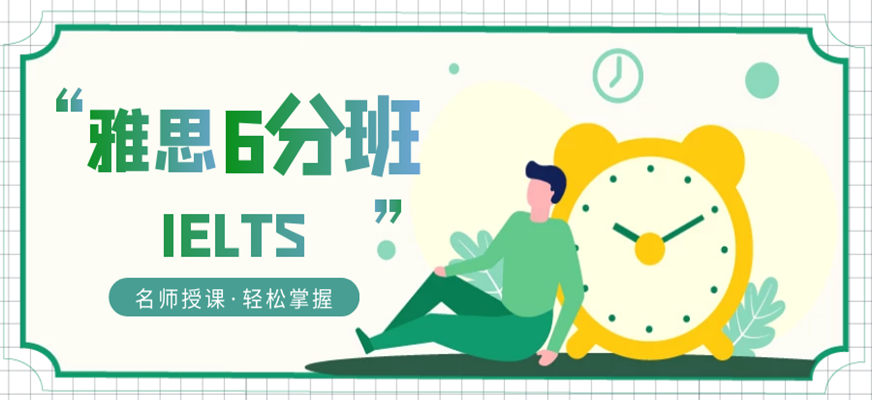发布时间:2021-02-08 14:36:45来源:有考培训网综合

雅思考试和用于英国签证及移民的雅思考试包含纸笔模式与机考模式,考生可自由选择适合自己的考试模式。选择纸笔模式的考生将通过纸笔模式参加听力、阅读及写作三个部分的考试,并通过 "人人对话"形式参加口语考试。纸笔模式适用于雅思考试学术类和培训类,和用于英国签证及移民的雅思考试学术类和培训类。
以雅思科目为立足点,以考点为突破点,实现提分;
课上讲解技巧,课下练习方法,双向进行,短时又;
以雅思提分为出发点,以学术能力为落脚点, 实现学术能力的突破;

南京启德雅思培训班怎么样?在雅思阅读背景知识中,有些时候会了解到翻译的内容。可能有些人不以为然,一个动嘴一个动笔这就是翻译。其实在语言学界,这二者背后是有很多详细的规定和区别的。如果你也想了解它们其中的区别不妨一起往下看看吧。

南京启德雅思培训班怎么样?
启德考培是知名国际教育机构——启德教育(EIC Education)旗下的出国考试培训品牌,截止目前在全国有14家分校,30个旗舰校区,在美国纽约、波士顿、澳大利亚悉尼及中国上海设有研发中心,教研核心团队则由教学经验丰富的教师及毕业于世界百强好的学校的精英组成,启德考培开设的IELTS、TOEFL、ACT、SAT、GMAT、GRE、AE等出国语言考试课程,采用线上线下混合式教学方式,配合总斥资1500万美元研发的学习系统Prepsmith TM,为考生提供用更少时间,提高更多分数的学习课程。
A. Although the terms interpretation and translation are often used interchangeably, by strict definition, interpretation refers to the spoken language, and translation to the written language.
虽然口译和翻译这两个术语经常可以互换使用,但严格地说,口译是指口语,翻译是指书面语言。
B. A competent translator should be very acquainted with the following points: A detailed knowledge of the subject matter is equally as important as academic knowledge of the language pairs, in certain cases (technical manuals for example) it plays a greater role. An ability to write well is also important. Proofreading and editing is a good way to break into the industry and the skills gained will help you later on; Although a degree may not be absolutely necessary, a qualification in translation is important; Practice the language! Take a language course or work towards a degree or whatever you feel is appropriate. Read newspapers in that language and keep abreast of the culture, listen to music and news from that country ff able to. Travel to the country as often as you are able to; No course of study will ever be perfect. Only you can judge whether it is the right one to meet your needs; Those basic qualifications will help one get started but after that it is one's experience on the job and performance as a translator that counts; There are more opportunities for freelance translators than In-House; Attend local translation events and seminars. It will not only help one learn more about different subjects, it will also help one make contacts in the translation and interpreting field.
一个称职的翻译应该非常熟悉以下几点:一个主题的详细知识是同等重要的学术知识的语言对,在某些情况下(如技术手册)它发挥了更大的作用。良好的写作能力也很重要。校对和编辑是进入这个行业的一个好方法,所获得的技能将帮助你以后;虽然学位并非必要,但翻译资格是重要的;练习语言!参加一门语言课程,或者努力获得一个学位,或者做任何你认为合适的事情。读那种语言的报纸,了解那种文化,听来自那个国家的音乐和新闻。尽可能多地去乡下旅行;没有一门课程是百分百的。只有你才能判断它是否适合你;这些基本素质将有助于一个人的起步,但在此之后,重要的是一个人的工作经验和作为一名翻译的表现;自由译者的机会比在公司内部要多;参加当地的翻译活动和研讨会。它不仅可以帮助人们更多地了解不同的主题,还可以帮助人们在翻译和口译领域建立联系。
C. interpretation is generally categorized into consecutive interpretation and simultaneous interpretation. The former refers to the circumstance where the interpreter waits until a complete statement has been spoken and then begins interpreting (so only one person is speaking at a time). It is used primarily to interpret witness testimony, a situation in which everyone in the courtroom needs to hear the interpretation. Simultaneous interpretation is generally considered inappropriate for witness testimony -- unless the courtroom is equipped with wireless equipment for that purpose -- because hearing two voices at once is too distracting.
口译一般分为交替传译和同声传译。前者指的是口译员等到完整的陈述陈述完毕后才开始口译的情况(一次只有一个人在发言)。它主要用于解释证人的证词,在这种情况下,法庭上的每个人都需要听解释。同声传译通常被认为不适合于证人作证——除非法庭为此配备了无线设备——因为同时听到两个声音太让人分心。
D. A court interpreter is anyone who interprets in a civil or criminal court proceeding ( e.g., arraignment, motion, pretrial conference, preliminary hearing, deposition, trial) for a witness or defendant who speaks or understands little or no English.
法庭口译员是在民事或刑事法庭程序(如提审、动议、审前会议、预审、作证、审判)中为英语说得或听不懂英语的证人或被告进行口译的人。
E. Court interpreters must accurately interpret for individuals with a high level of education and an expansive vocabulary, as well as persons with very limited language skills without changing the language register of the speaker. For the other languages, the following self-study techniques are suggested: (1) expand your vocabulary, (2) develop your own glossaries, and (3) develop interpreting techniques, namely, consecutive interpretation, simultaneous interpretation, and sight translation.
法庭口译员必须在不改变讲话者语言记录的情况下,准确地为受教育程度高、词汇量大的人以及语言技能非常有限的人口译。对于其他语言,建议采用下列自学技巧:
(1)扩大词汇量;
(2)发展自己的词汇量;
(3)发展口译技巧,即:交替传译、同声传译和现场翻译。
更多培训课程: 南京启德雅思英语培训 更多学校信息: 南京秦淮区启德考培英语培训 咨询电话: